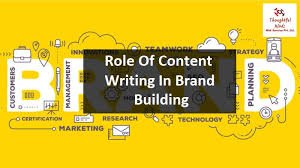Maximizing Your Earnings with Content Monetization: Top Methods You Need to Try
In today’s digital world, content is not just king—it’s also a powerful tool for monetization. Whether you’re a blogger, video creator, or business owner, learning how to effectively monetize your content can turn your passion into profit. However, the challenge lies in choosing the right methods that will maximize your earnings without sacrificing the quality of your content. In this post, we’ll explore top content monetization strategies and how you can leverage them to maximize your website’s revenue. 1. Affiliate Marketing: Earning Through Product Recommendations Affiliate marketing is one of the most straightforward and profitable ways to monetize your content. It involves promoting products or services through affiliate links and earning a commission for each sale made through your link. Many companies, including Amazon, eBay, and niche-specific brands, offer affiliate programs that can be seamlessly integrated into your content. If your content resonates with your audience and includes relevant product recommendations, affiliate marketing can provide a steady stream of passive income. How to Get Started: Affiliate marketing works best when you’ve built trust with your audience. By promoting products that you genuinely believe in, you can earn a commission while also delivering value to your followers. 2. Ad Networks: Earning Money with Display Ads Using ad networks like Google AdSense, Mediavine, or AdThrive is one of the most popular ways to generate passive income from your website’s content. These networks place display ads on your site, and you earn money based on either clicks (CPC) or impressions (CPM). While the earnings from display ads can be small at first, they can grow significantly as your website traffic increases. The best part is that once you’ve set up the ads, they run automatically, generating revenue while you focus on creating more content. How to Get Started: While ad networks provide a hands-off way to monetize, it’s important not to overwhelm your visitors with too many ads. Balance is key to maintaining a great user experience. 3. Sponsored Content: Partnering with Brands for High-Paying Opportunities If your website has a strong following, you can monetize your content through sponsored posts. Sponsored content involves collaborating with brands to create content that promotes their products or services in exchange for payment. This can include written articles, social media posts, or videos that feature the brand. Sponsored content can be highly lucrative, especially if you’ve built a loyal audience. Brands are often willing to pay well for access to your readership, particularly if your niche is attractive to their target audience. How to Get Started: Sponsored content can be a highly profitable revenue stream, but it’s important to ensure that the content is valuable and relevant to your audience. 4. Selling Digital Products: Leverage Your Expertise One of the most scalable ways to monetize your content is by selling digital products. Whether it’s an eBook, online course, design templates, or downloadable software, digital products have a low cost of creation and can provide significant profits over time. Once created, these products can be sold repeatedly with minimal effort, making them a great source of passive income. If you’re an expert in your niche, you can create and sell valuable resources that your audience is eager to purchase. How to Get Started: Selling digital products allows you to generate consistent income from your content, especially if you continue to create and refine your offerings based on audience feedback. 5. Subscription Models: Recurring Revenue for Exclusive Content A subscription-based model is an excellent way to create recurring income. By offering exclusive content, early access, or perks to paying subscribers, you can monetize your content while building a deeper connection with your audience. Platforms like Patreon and MemberPress allow creators to offer subscription-based access to their content. Subscribers are often willing to pay a monthly fee if they feel like they’re getting exclusive or premium content that’s worth the price. How to Get Started: A subscription model offers predictable, recurring income and helps build a community around your content. Conclusion: Monetize Your Content with Confidence Content monetization isn’t a one-size-fits-all strategy. By experimenting with different methods like affiliate marketing, ad networks, sponsored content, selling digital products, and subscription models, you can discover what works best for your audience and niche. Monetizing your content takes time and effort, but with persistence, you can build a sustainable income stream. Focus on providing value to your audience, and the monetization opportunities will follow. Related Tags:




















